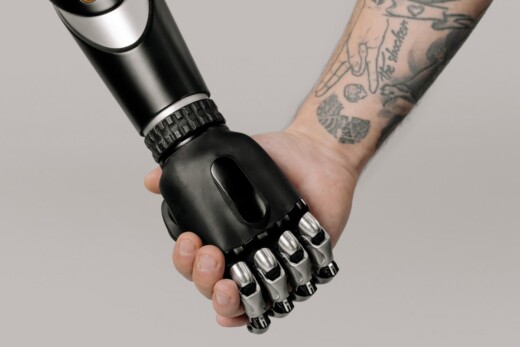The wrong decade for biometric buildings tips, Chips inside employees to monitor work
The Wrong Decade for Biometric Buildings guide
28 June 2022
While it might not sound likely, humans and buildings have something in common – they’re both ripe for scientific experimentation. Thankfully, it’s not quite as dystopian as it sounds. The concept of biometric-enabled buildings or architecture is a field that’s growing in popularity, as hi-tech corporations aim to increase security while getting rid of ‘loseables’ like ID cards and keyfobs. Are we really ready to become budget cyborgs, though?
Let’s get one thing out of the way – cyborgs are cool. Whether it’s RoboCop or Darth Vader, the idea of shaping human capabilities with technology has a long-standing role in fiction. In fact, the very first cyborg may have appeared as early as 1843 in the Edgar Allen Poe story The Man Who Was Used Up. In this debut, the eponymous Man had bits of his body replaced with mechanical parts.
The modern perception of cyborgs is two-fold, equally incredible and so dull it’s heartbreaking. In Hollywood, characters like Tony Stark’s Iron Man meld the human body with computers in a sublime, seamless way, but, in real-life, this kind of technology is still so new that it barely exists at all. In fact, one of the more advanced uses of human/machine interfaces is in opening doors or otherwise making things easier around the office. This is what we know as a biometric interface.
We’ll get to that shortly, though.
Biometric Security
Biometric security is arguably the most common form of communication between device and body that we have today. For instance, most recent smartphones are capable of retina, fingerprint, and voice recognition, while passports usually include a biometric chip to reduce instances of forgery. It’s fair to say that the rollout of biometric technology has been slow, though, for one major reason – it can be considered intrusive.
In an article discussing whether biometrics are safe, the security-based website ExpressVPN claims that trust in the idea has been hampered by hacking, false positives that led to arrests, and the impossibility of changing stolen information. Put another way, once somebody knows your every detail, there’s very little recourse for getting it back. You can’t change your fingerprints like you can a password.
Of course, biometric security doesn’t create robot cops but the same concerns arise. The vast majority of people consider the human body sacred in some way or another, and so losing any part of it is a special kind of violation. A cybernetic leg might sound great on paper but it means losing a real one first. Similarly, nobody wants biometric imprints of their retinas sold on the dark web.
Monitoring
So, the idea of implanting biometric chips inside employees, per Gadget Flow, so that they can open the doors of the workplace is a special kind of problem. Implant company Dangerous Things claims that up to 100,000 people already have a chip inside them to detect and operate RFID and NFC fields. These are usually associated with opening doors or tracking, e.g. helping farmers identify livestock or operatives find products in a warehouse.
While that’s all very useful, it nevertheless reduces the person to a series of numbers that can be followed around. In fact, the very first experiment with an implanted RFID chip, back in 1998, involved a computer ‘watching’ somebody, per The Medical Futurist, wander around the University of Reading. This kind of reduction is especially problematic at the moment, as paranoia about spying on homeworkers continues to push wedges between employee and employer.
For those excited about biometrics, the sad reality is that the level of interaction between workers and physical structures is falling, and we’re likely to see the workplace moving into something that resembles the cloud. While biometric technology could work wonders in this space, it already needs so much reputation management that it may never get beyond the experimental phase.
Taken in isolation, the melding of human biology with architecture is an exciting, promising field – just not as we’ve experienced it to date. It’s a shame, but it’s still too early for us to gain our door-opening superpowers.
Comments on this guide to the wrong decade for biometric buildings article are welcome.
Architecture
Comments / photos for the The wrong decade for biometric buildings advice page welcome


